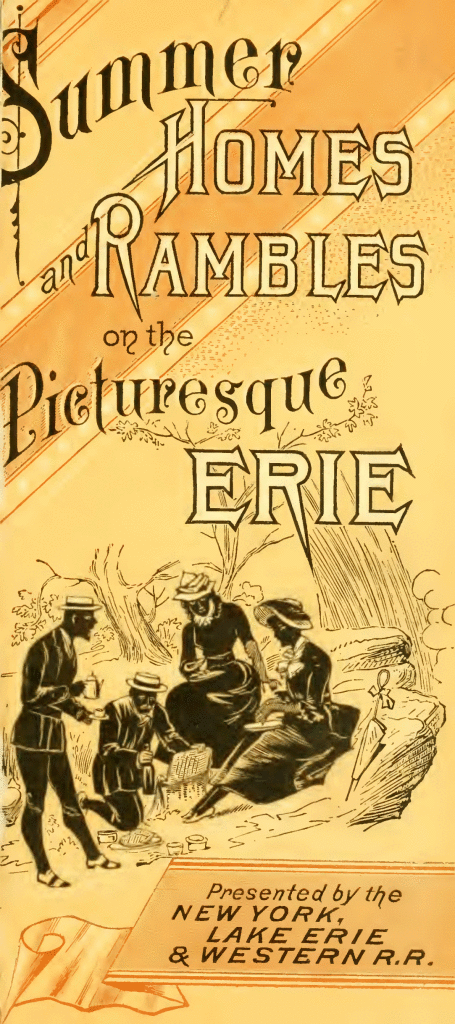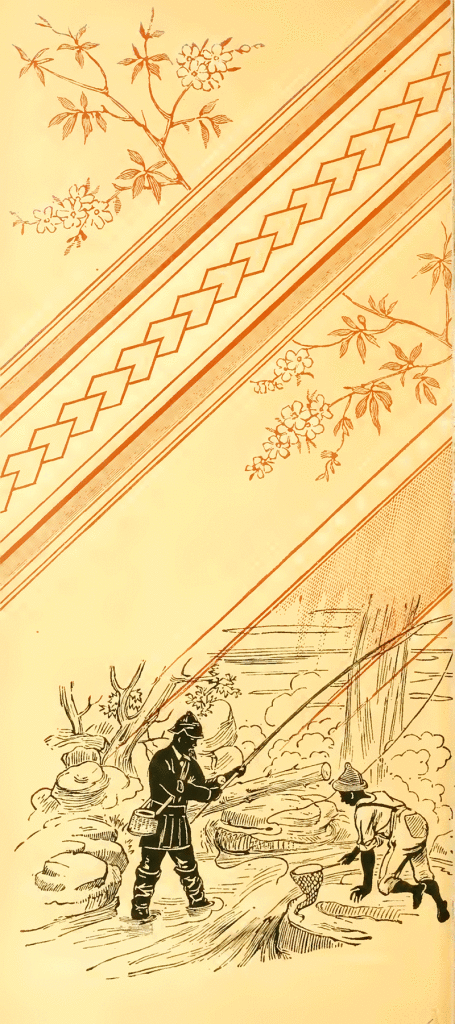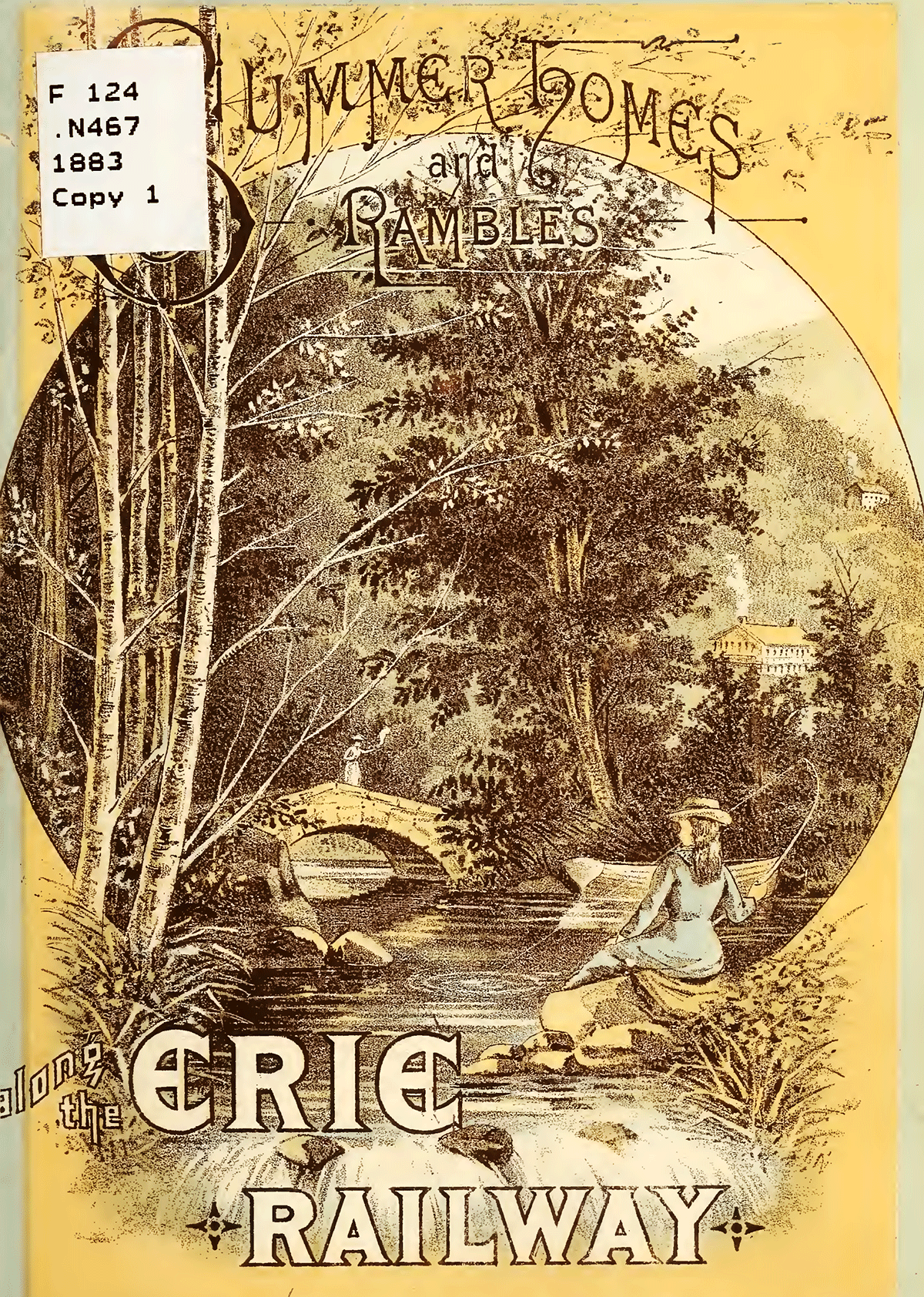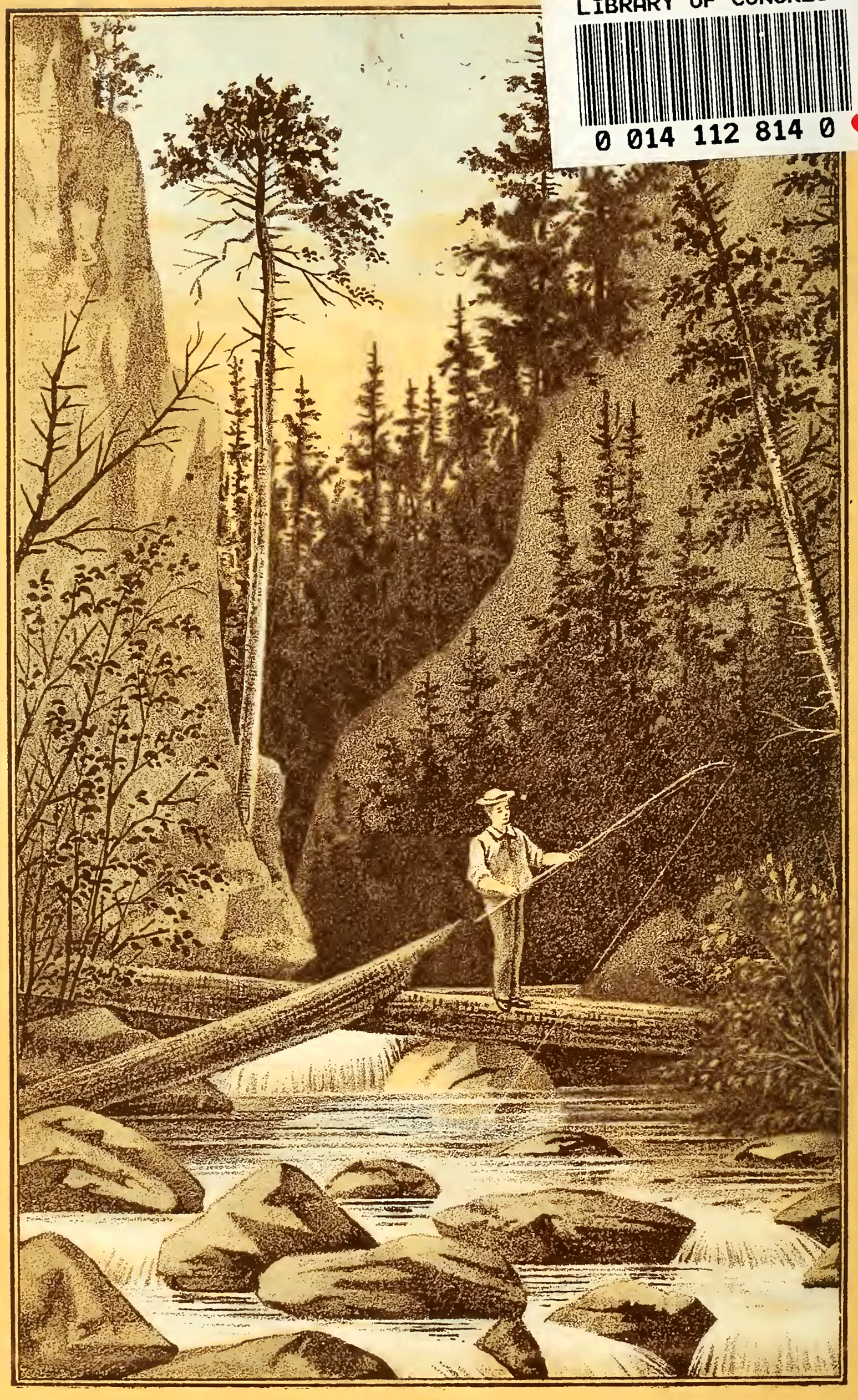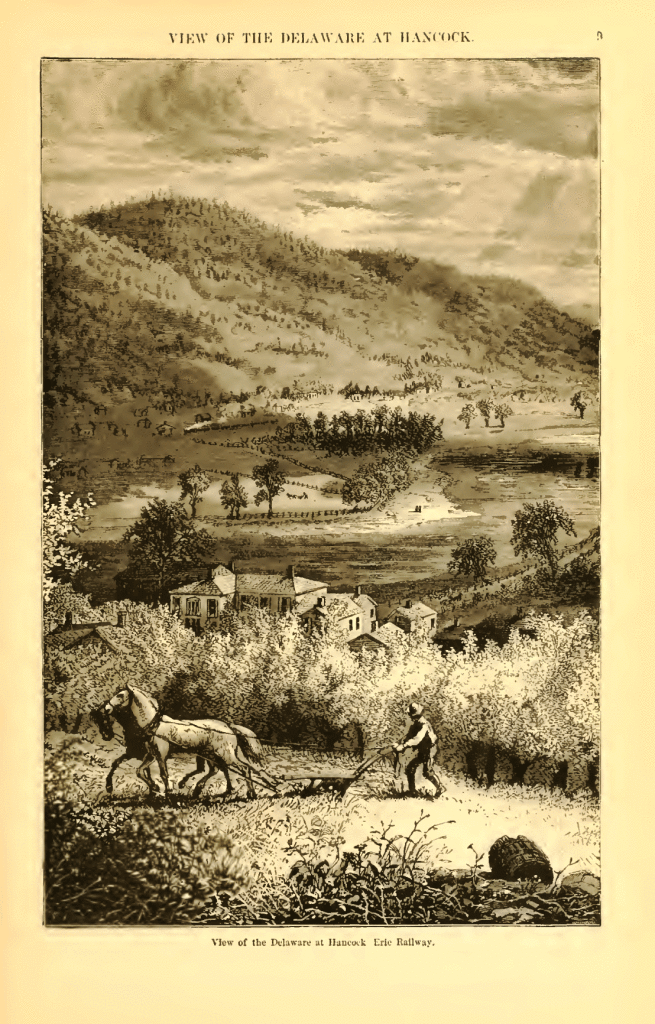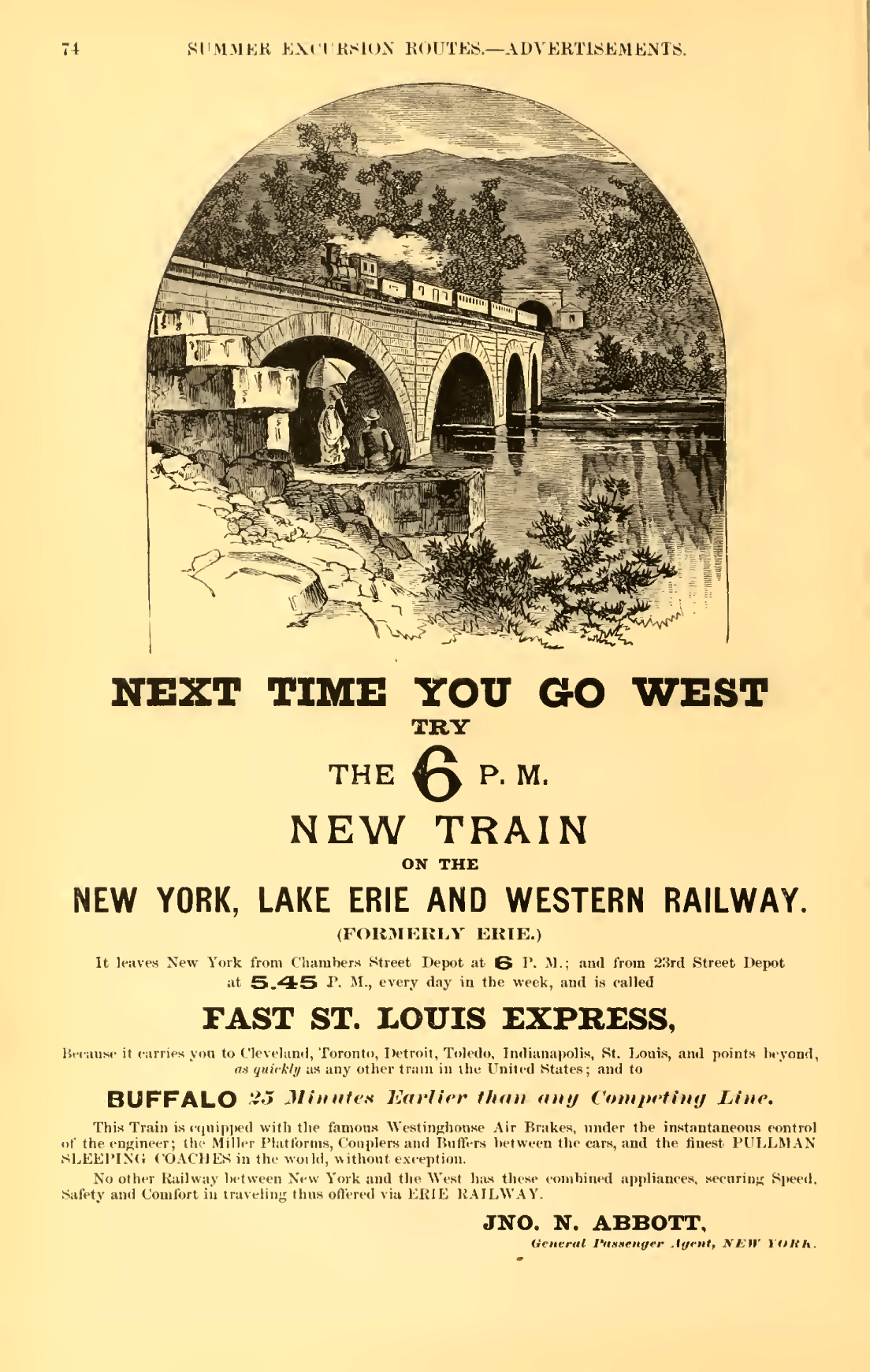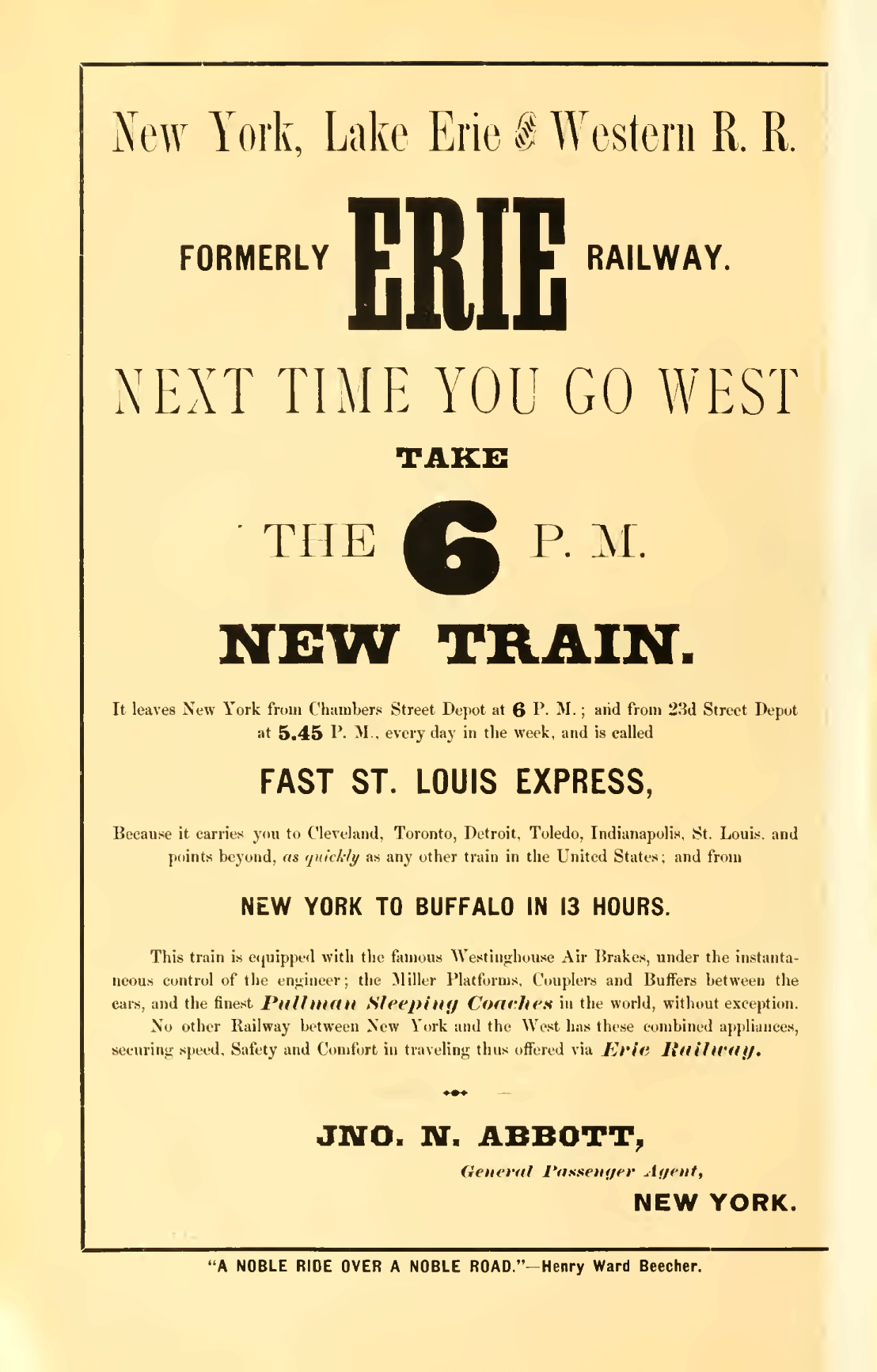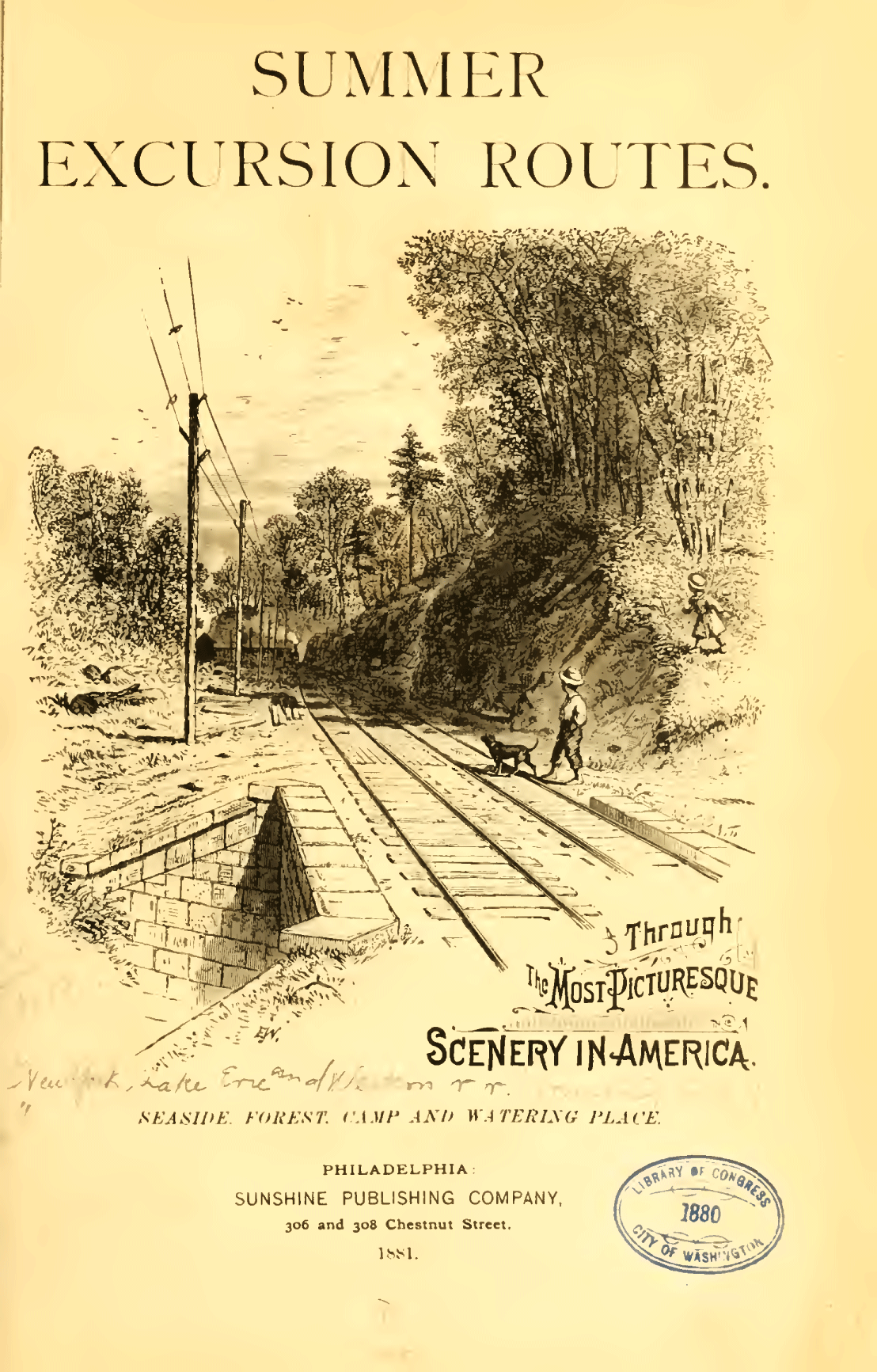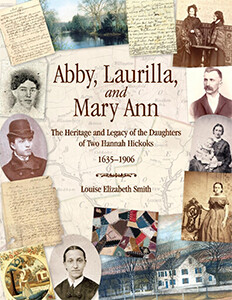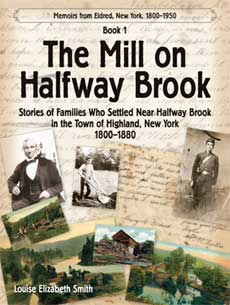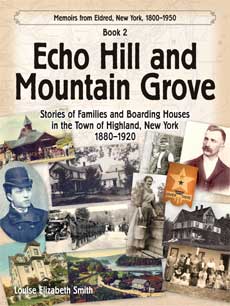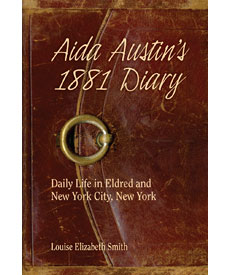Summer Homes and Rambles Along the Erie Railway, 1883
Along the Erie Railway, 1882
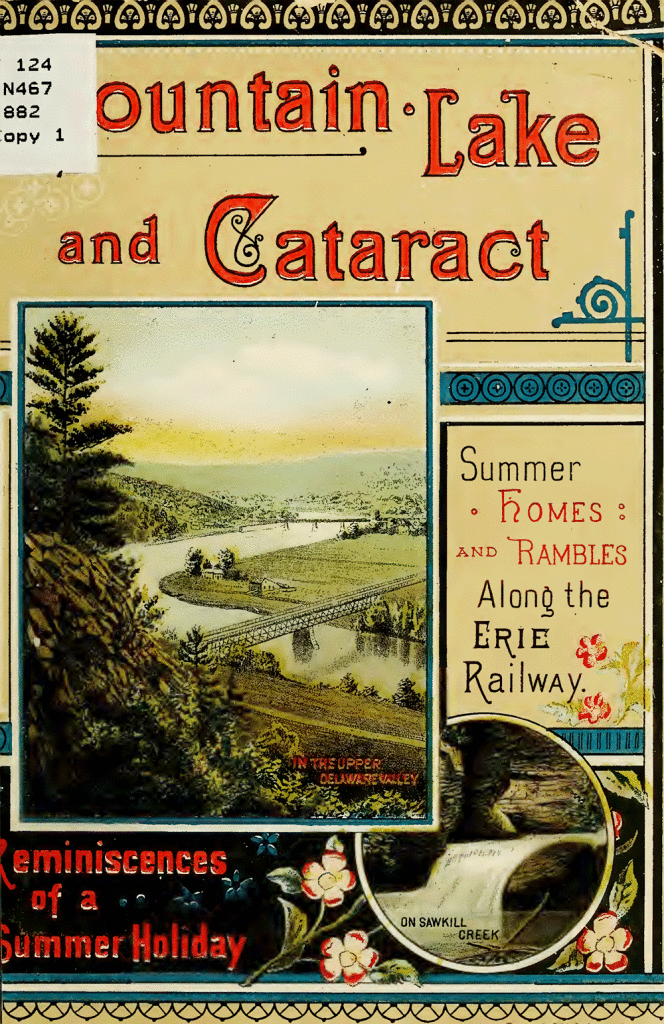
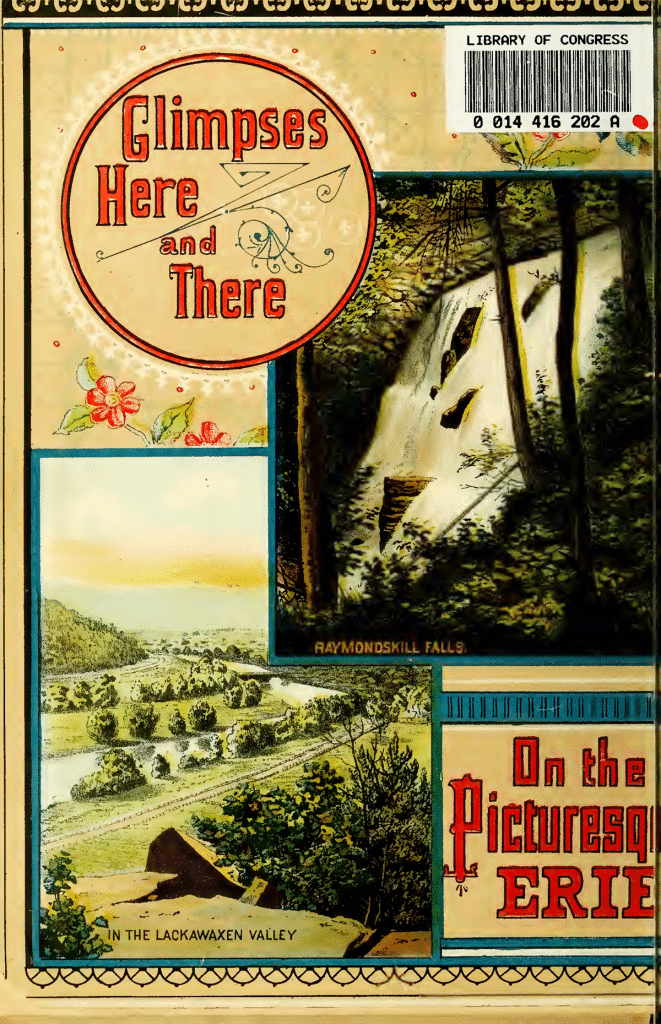
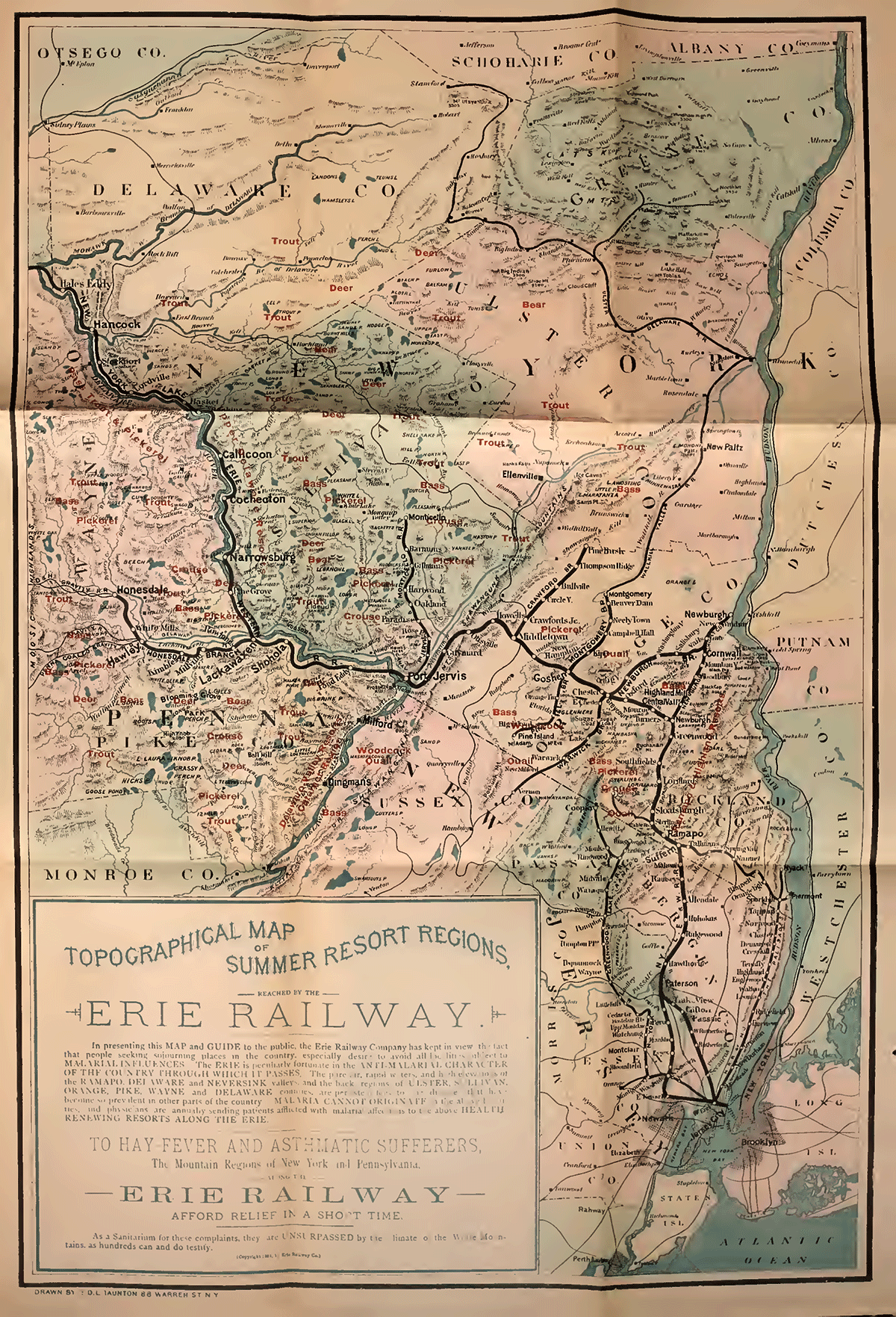
1881 Watkins’ Glen, NY
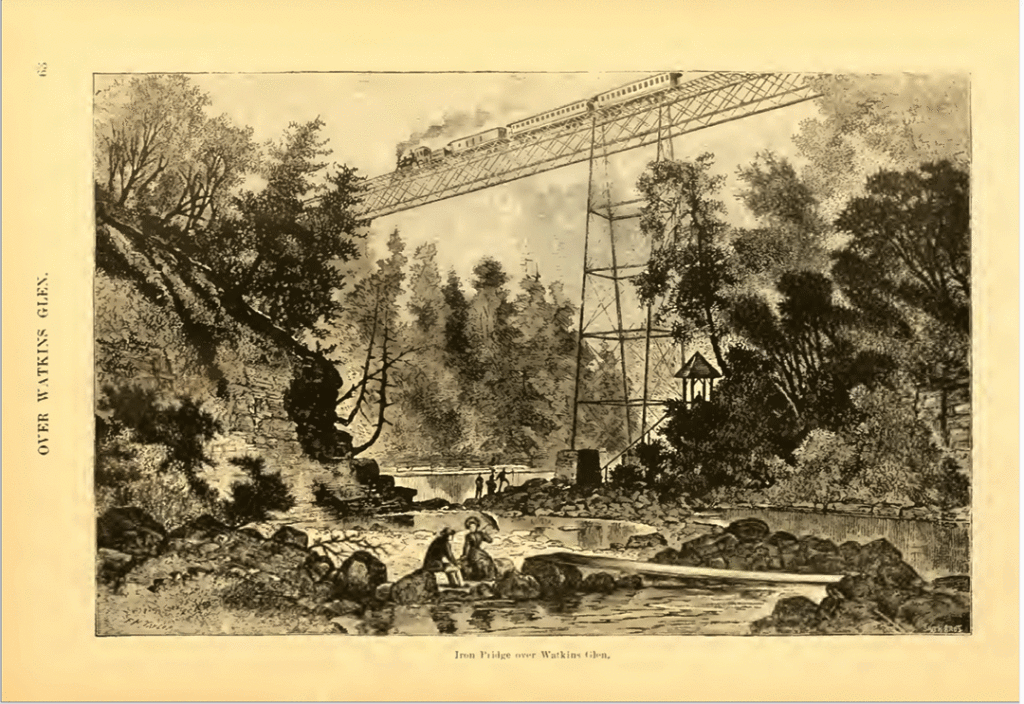
A Ramble through Watkins’ Glen, even at noonday, is cool and delightful. Excepting Niagara itself, no place will bear comparison with this wild and picturesue gorge. Our illustration represents the famous Rainbow Falls.
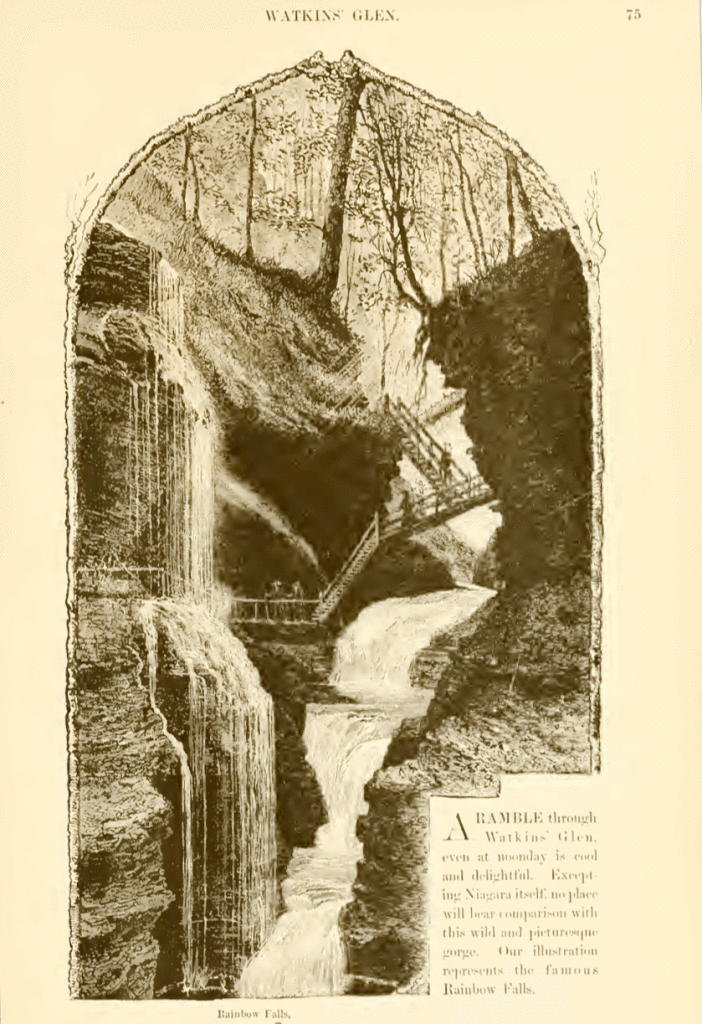
1881, Pure and Silver Gloss Cornstarch
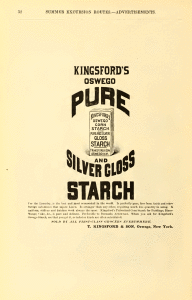
Is perfectly pure, free from Acids and other foreign substances that injure Linen.
Is stronger than any other, requiring much less quantity in using.
Is uniform, stiffens and finishes work always the same.
Kingsford’s PulverizedCorn Starch for Puddings, Blanc-Mange, Cake, etc., is pure and delicate.
Preferable to Bermuda Arrowroot.
When you ask for Kingsford’s Oswego Starch, see that you get it, as inferior kinds are often substituted.
Sold by all First-class Grocers everwhere.
T. Kingsford & Son, Oswego, New York
1881 View of the Delaware at Hancock
Erie Train Stations Near the Delaware, 1880
• Excursion tickets were valid for continuous passage either going or returning on the date of issue or anytime within the next 30 days.
• Package tickets of 10, 20, or 25 were good for either direction until used.
• Commutation tickets were valid for continuous passage between the stations named on the tickets, if the train stopped at said station. The limit was 60 rides between the stations during the month named on the ticket.
Miles from New York City
Callicoon, New York, 136
Cochecton, New York, 130.75
Deposit, New York, 177
Goshen, New York, 59.75
Hancock, New York, 163.75
Hankins, New York, 143
Hawley, Pennsylvania, 127
Honesdale, Pennsylvania, 136
Lackwaxen, Pennsylvania, 111
Long Eddy, New York, 146.75
Lordville, New York, 153.5
Middletown, New York, 67
Narrowsburg, New York, 122.25
Parkers Glen, Pennsylvania, 102.25
Paterson, New Jersey, 16.75
Pond Eddy, Pennsylvania, 99
Port Jervis, New York , 88.25
Shohola, Pennsylvania, 107
Sparrowbush, New York, 90.75
Tuxedo, New York, 38.5
The Erie Switchback, 1881
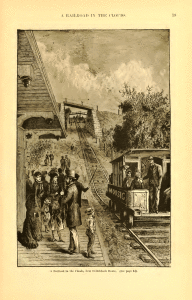
“Some of the peaks are 2,500 feet in height. The range is wild and rugged, and nowhere else in the State of Pennsylvania is the scenery grander or more diversified.
“Scaling its summits, spanning its chasms, and threading its dense forests, are two of the most novel railroads in the world.
“These are the Delaware and Hudson Canal Company’s Gravity Road and the Gravity Road of the Pennsylvania Coal Company.
“The roads are operated by an ingenious system of inclined planes, up and down the mountain, there being no locomotive smoke nor cinders to annoy the tourists.
“The delightful character of a ride over these gravity roads cannot be conveyed by words. There is nothing like it in this country. The Pennsylvania Coal Company’s road climbs from Dunmore, Pa., to a height of 2,100 feet in a distance of five miles.
“The road extends to Hawley, a distance of 33 miles, and then by another route back to Dunmore, one mile from Scranton.
“The Delaware and Hudson’s gravity road extends from Honesdale to Carbondale, seventeen miles, and back by another route.
“The highest point on this road is 2,000 feet, and from the car windows the Catskill mountains may be seen, sixty miles away. Continue reading
Next Time You Go West, 1881
1881 Railways and Canals
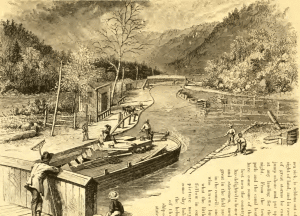
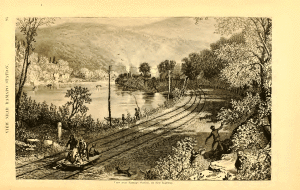
The Erie Canal
“Here we stop to view an old familiar sight, two boats passing a canal lock.
“Our illustration presents a scene at once charming and romantic. Tourists frequently indulge in short trips on the ‘raging canal.’
“A few days passed aboard one of these boats will afford lots of fun and make many a new acquaintance.
“The route traversed by this canal is located along the richest and most beautiful portions of the empire State, and the traveler never is sea sick, is seldom out of sight of land, and in case of great storms, he can jump ashore and put up at any landing for the night.”
—Summer Excursion, 1881, p. 57.
The Ramapo Valley
“There are few more romantic localities than that part of the Valley of the Ramapo which is traversed by the Erie Railway. Elevn lakes, perched high on the mountains…send their tumbling outlets into the valley and form the stream known as the Ramapo River. There are forty of these lakes within few miles of the spot where the Erie Railway enters the valley…
“The railroad presents the ever varying scenery of the valley to the tourist for a distance of 16 miles. The river courses meadows and ravines, tumbles over rocky bottom, and spreads out here and there into beautiful lakes.
“Fixed ledges of lofty rock, and huge piles of enormous boulders tower above and lie along its borders. No region is more interesting historically.”
General Washington stood upon the summit of Torne, “a bold mountain beak, near Ramapo Station… while the American troops were quartered in the valley during the Revolution, and surveyed the movements of the British fleet in the New York Harbor.”—Summer Excursion, 1881, p.88.

